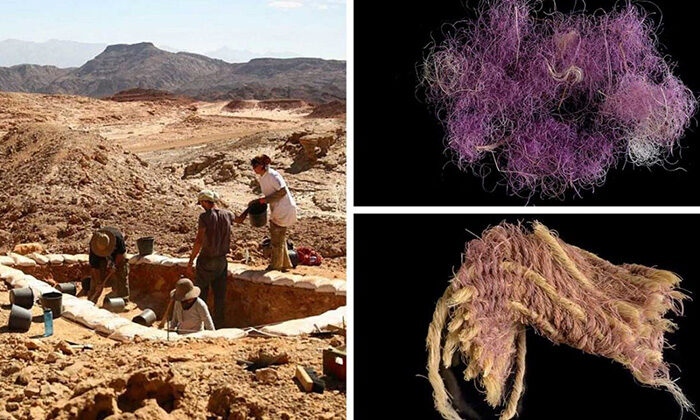
3 scraps from 1,000 BCE, earliest such finds in region, point to Edomite kingdom described in Bible; vibrant and lasting ‘royal’ dye, mark of the elite, comes from murex sea snails. Photo | COURTESY.
Jerusalem (AFP)
Israeli researchers said they had found scraps of fabric coloured with a purple dye dating from the eras of King David and King Solomon in the south of the country.
“The researchers were surprised to find remnants of woven fabric, a tassel and fibres of wool dyed with royal purple,” the Israel Antiquities Authority, Tel Aviv University and Bar Ilan University said.
The discovery happened while they were examining coloured textiles from Timna Valley, an ancient copper production district, they said in a joint statement this week.
“Direct radiocarbon dating confirms that the finds date from approximately 1000 BCE, corresponding to the biblical monarchies of David and Solomon in Jerusalem,” they said.
It was the first time purple-dyed Iron Age textiles had been found in Israel or the Levant, they added.
The colour was associated with royalty, nobility and priests and the dye “often cost more than gold”, said Naama Sukenik, curator of organic finds at the Israel Antiquities Authority.
“Until the current discovery, we had only encountered mollusc-shell waste and potsherds with patches of dye, which provided evidence of the purple industry in the Iron Age,” she said.
“Now, for the first time, we have direct evidence of the dyed fabrics themselves, preserved for some 3,000 years.”
Also called Tyrian purple, after the city in southern Lebanon known for its production, the pigment is still highly valued today.
“The dye, which is produced from species of mollusc found in the Mediterranean, over 300 kilometres (185 miles) from Timna, is often mentioned in the Bible and appears in various Jewish and Christian contexts,” the statement said.
Erez Ben-Yosef from Tel Aviv University’s archaeology department said the finds should “revolutionise our concepts of nomadic societies in the Iron Age”.
He identified the Timna site as part of “the biblical Kingdom of Edom, which bordered the kingdom of Israel to the south”.
The site’s state of preservation was “exceptional and it is parallelled only by that at much later sites such as Masada and the Judean Desert Caves”, he said.
“The new finds reinforce our assumption that there was an elite at Timna, attesting to a stratified society,” he said.
© 2021 AFP

